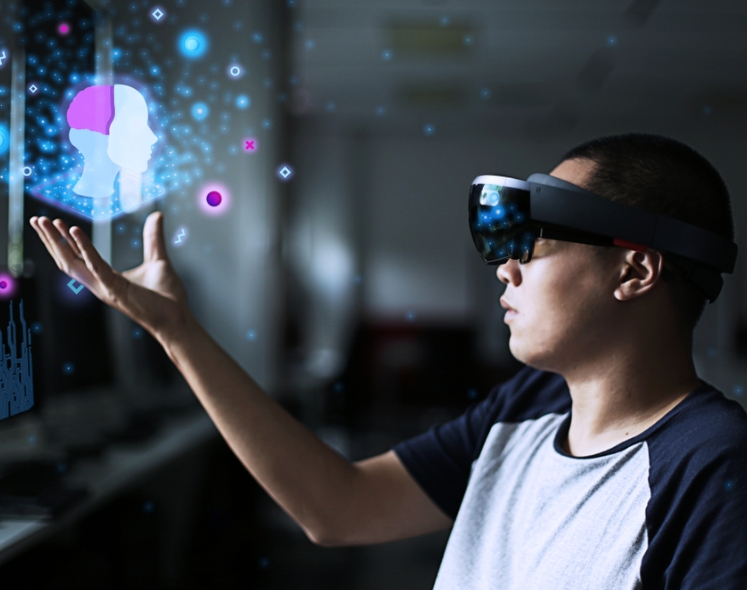Augmented Reality
What is Augmented Reality (AR)?

Definition:
“Augmented Reality (AR)” in the realm of technology refers to a technology that overlays digital information or content onto the real-world environment, enhancing the user’s perception and interaction with the surroundings. AR combines computer-generated images, videos, or data with the physical environment, creating an immersive and interactive experience. This technology is commonly used in applications such as mobile gaming, education, navigation, and industrial training.
Analogy:
Imagine Augmented Reality as a magic lens that you wear, enhancing your view of the world. As you look through the lens, additional information, animations, or graphics seamlessly appear in your field of vision, enriching your understanding of the environment. AR, in a similar fashion, enhances reality by superimposing digital elements on the real world.
Further Description:
AR technology utilizes devices like smartphones, smart glasses, or AR headsets to merge digital content with the physical world. It relies on sensors, cameras, and other technologies to understand the user’s environment and deliver contextually relevant information. AR applications vary from simple overlays, like Snapchat filters, to more complex experiences, such as interactive museum exhibits or virtual design simulations.
Why is AR Important?
AR enhances user experiences by adding a layer of digital information to the real world, creating new possibilities for entertainment, education, and productivity. It bridges the gap between the digital and physical realms, offering innovative solutions in fields like gaming, healthcare, architecture, and more. AR’s ability to provide real-time, context-aware information makes it a valuable technology for various industries.
Examples and Usage:
Mobile Gaming: AR is used in mobile games like Pokémon GO, where virtual creatures and elements are superimposed onto the player’s real-world surroundings.
Navigation: AR navigation apps overlay directions and points of interest on a live camera feed, helping users navigate their surroundings more effectively.
Education: AR enhances learning experiences by bringing subjects to life. For example, AR apps can project 3D models of planets for a more immersive astronomy lesson.
Industrial Training: AR is employed in industrial settings for training purposes, allowing workers to practice complex procedures in a simulated environment.
Basically, Augmented Reality transforms the way users perceive and interact with their environment by overlaying digital content onto the real world. The applications of AR are diverse, ranging from entertainment and gaming to education and professional training.
For example, while a consumer might use AR to visualize furniture in their home before purchasing, a surgeon could use AR for enhanced guidance during medical procedures.
Key Takeaways:
- Augmented Reality (AR) overlays digital content onto the real-world environment, enhancing user perception and interaction.
- AR applications use devices like smartphones, smart glasses, or AR headsets to merge digital and physical elements.
- AR is employed in diverse fields, including gaming, navigation, education, and industrial training.
- AR enhances user experiences by providing real-time, context-aware information in various contexts.




